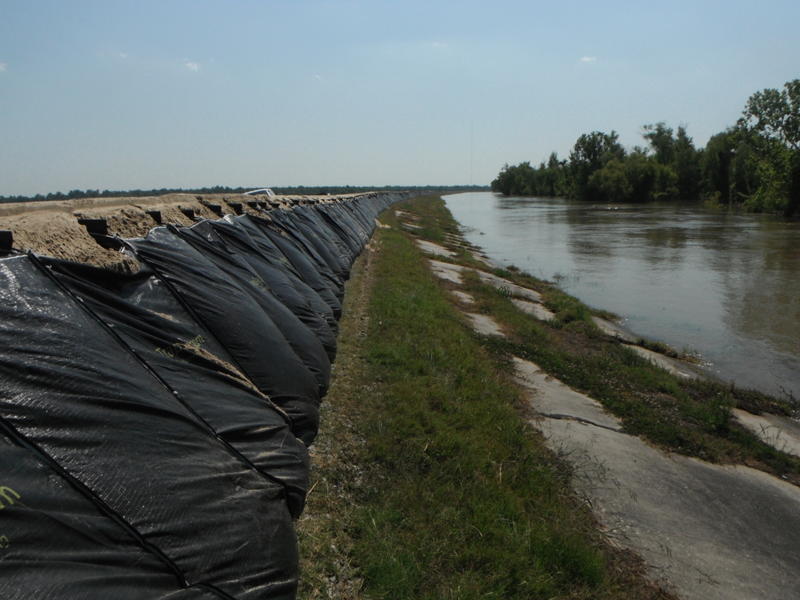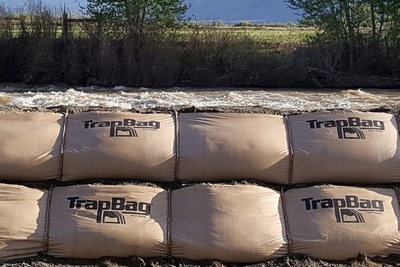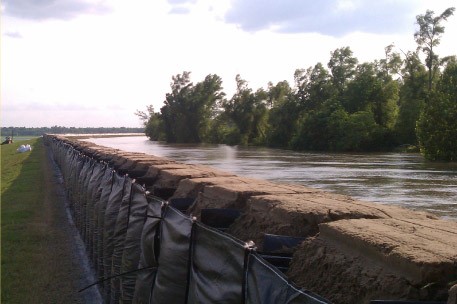The Missouri River is the second largest river in North America and is the longest river going into the Mississippi River. It flows through seven midwestern states, including Montana, North Dakota, South Dakota, Nebraska, Kansas, Iowa, and Missouri.
In a single year, flooding along the Missouri River can result in billions of dollars worth of damages, causing a push for better flood control. Given the length of the Missouri River, investing in flood control and damage prevention is crucial for protecting cities, people, and land along the river.
How River Flooding Impacts Communities
River flooding can have devastating effects on communities, threatening the following:
- People: Floods are one of the main causes of weather-related deaths in the United States. Those who live along the Missouri River and other areas that are susceptible to flooding could be at risk if the proper flood barriers are not in place. If flooding does occur, people may be forced to move to higher ground and risk permanent displacement.
- Food: Flooding that occurs in rural areas along the river can cause damage to crops, resulting in a potential food shortage.
- Property: A flood can completely destroy a person’s land, home, or business. Damage from flooding can significantly lower the value of residential and commercial properties that do survive.
- Infrastructure: Roads, bridges, dams, subways, and other forms of infrastructure are essential for supporting a community. This infrastructure can face significant damage in the event of a flood if the right barriers are not in place.
- Environment: When flooding occurs, there is increased water flowing in and out of the river, creating friction that worsens erosion. This erosion can lead to land collapsing into the river, negatively impacting the environment.
- Economy: The cost of river flooding can be billions of dollars, causing the infrastructure to be rebuilt, agriculture to be regrown, and essential buildings to be repaired.
How Often Does the Missouri River Flood?
The Missouri River has experienced frequent flooding since 1881, flooding four times in 1943 and six times in 1952. Some of the most recent notable flooding incidents along the Missouri River were in 1993, 2011, and 2019.
In 1993, the Missouri and Mississippi Rivers flooded across Missouri, North Dakota, South Dakota, Kansas, Nebraska, Minnesota, Iowa, Wisconsin, and Illinois. The flood was named The Great Flood of 1993 and went on for over four months, resulting in at least 50 deaths and billions of dollars worth of damages.
The Missouri River flooded again during The Great Flood of 2011, devastating Nebraska and South Dakota. The flood resulted in the destruction of 4,000 homes and caused more than two billion dollars in damages.
In 2019, flooding occurred along the Missouri River due to the wettest January to May on record. The floods affected Nebraska, Missouri, South Dakota, Iowa, and Kansas.
Climate Change Increasing Missouri River Levels
Climate change plays a huge role in flooding events along major rivers like the Missouri River. Temperatures around the world are increasing each year, resulting in increased snowmelt, rising sea levels, and increased rainfall. With these wetter conditions comes the increased risk of flooding and worsened potential damages as well.
Some of the Missouri River’s most historic floods occurred in 1881, 1943, 1952, 1967, 1978, 1993, 2011, and 2019.
Missouri River Flood Control
Over the years, there have been many efforts to control flooding along the Missouri River and prevent devastating damages. Traditional flood control often involves seawalls, dams, levees, and cofferdams. However, there is still the need for reliable, cost-effective flood barriers in states bordering the river as future flooding could happen at any moment.
TrapBags as Missouri River Levees
TrapBag flood bags offer a solution for a variety of flood barrier needs. TrapBag barriers are composed of self-reliant cells for optimal strength. The cells are collapsible for easy removal and can be reused later for a more sustainable flood control solution. TrapBags contain 40% less filling than traditional sandbags, and unlike traditional flood walls, TrapBags do not require ground infiltration. TrapBag barriers are highly versatile and can be used as dams, levees, seawalls, and more.
TrapBags as Missouri River Dams
TrapBag barriers can be used as Missouri River dams to prevent flood damage to nearby properties. The flood bags are composed like an accordion for leakproof protection, keeping the surrounding land dry. TrapBags come in different sizes and heights depending on the amount of protection needed. This eliminates the need for stacking, which often leaves room for water to flow through.
TrapBags as Missouri River Diversion Walls
Missouri River diversion walls can be used for diverting debris, fallen trees, and other damaging objects that can flow through flooding water. TrapBag barriers can act as strong diversion walls to keep flooding water and debris away from homes and property.
TrapBags as Infrastructure Protection
Infrastructure like bridges, roads, and subways can face detrimental damage during flooding. TrapBags can support critical infrastructure near the Missouri River by providing a reliable flood barrier.
 Benefits of TrapBag Barriers
Benefits of TrapBag Barriers
TrapBags offer many advantages over traditional flood bags and methods, including:
- Versatile: TrapBags can be filled with sand, washed gravel, or concrete for either a temporary or permanent solution.
- Durable and dependable: TrapBags are leakproof and don’t require any stacking that might leave room for water to flow through.
- Reuseable: TrapBags can be easily deconstructed and reused for up to five years.
- Easily installed: TrapBags don’t require heavy machinery or ground infiltration during the installation process.
- Quick to deploy: TrapBags can be deployed quickly for immediate protection during emergency flooding.
Flood Protection for River Communities
River communities will always be at risk for potential flooding and the devastating damage that comes with it. TrapBag barriers offer effective flood protection that can save lives and land during flooding events. Order the TrapBag solution you need to protect your community from Missouri River flooding.



 Benefits of TrapBag Barriers
Benefits of TrapBag Barriers